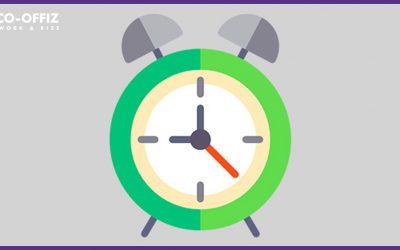5 Social Media Metrics You Need to Pay Attention to in 2020
It’s not always easy to measure social media metrics. Social media is incredibly fast, diverse and changing all the time. It can be challenging to evaluate success through multiple social networks, forums, and communities, particularly if you pay attention to many different conversations at once. As if it wasn’t hard enough to handle a social media strategy, gaging outcomes presents its own unique challenges. How do you measure the results of social media that affect your bottom line? To analyze your success, you need a clear strategy. That’s where the measurements of social media can save the day.
Engagement Rate:
Through counting the numbers of each form of communication (e.g. likes, shares, responses, comments), recruiters may calculate enthusiasm in their social positions. Depending on the social platform, the number of potential ways followers can engage with posts varies slightly.
Popular posts tend to produce a ‘snowball effect’: the higher the level of engagement that the posts initially achieve, the greater the audience to which they are exposed.
How can you increase the metric?
- Research some of the challenges faced by your clients and candidates and ask thought-provoking questions about these subjects.
- Pictures of daily life at the office of your company will share well and demonstrate your business’ personality.
- Posts that praise candidates recently placed can generate positive engagement from the candidate, their friends and family, and their new employer.
Post Reach and Impression:
This is associated with the top of the marketing funnel that can speak to brand awareness directly.
Impressions are how many times your ad unit was displayed to a user. This will sometimes be associated with an impression cost-per-1000 or CPM.
Reach is the number of people who have seen your ad unit. This is different from impressions because several impressions would still contribute to a Reach of 1.
Impressions and Reach are the key KPIs of initiatives focused on increasing awareness or having a goal of meeting a target number of people.
To Know More: 5 Social Media Hacks to Grow Your Startup
Social Referrals:
As an online retailer, referrals are a very important metric for monitoring. Ultimately, they affect your sales directly. References are defined by the number of visitors from social media to your website.
It’s a direct referral visit every time someone clicks on a social media post and arrives at your website.
If your social media strategy is on top of your game, referrals will account for a significant portion of your web traffic as a whole.
One of your primary goals should be to attract consumers to your website via relevant social media. Links also provide you with an idea of what posts actually influenced actionable outcomes. References are better tracked through the metric tracking system of Google Analytics.
Open Analytics, go to “Acquisition,” choose “Social” and then “Referrals to the network.” You will see a document on social media metrics that determines which social networks give your website the most traffic. Clicking on each name of the social network will provide you with a rundown of all connections and information posted on the network.
Conversion:
When advertising agencies and companies use social media successfully, it has the potential to increase customer interaction and conversion rates of brands.
It means your business market resonates with being active in the community will have a direct impact on your business success and the products or services you offer.
By tracking this metric, you will gain a deeper understanding of how to remove your audience from their social media to complete your website purchase.
Tracking the conversion metric is often thought to be something that is restricted to ads only if you want to measure their efficacy.
While it works very well in this way, it can also be used without advertisements to track conversions when you try to target those who are already regularly engaging with your social media.
Beyond finding out how to improve your converts, monitoring them can also help you determine why certain social media posts don’t convert.
This allows you to remove failed marketing strategies from your marketing plan to try something new or implement more of what already works for your business.
Click-Through Rate (CTR):
Click-Through-Rate or CTR is the online indicator showing how many people click on your social content and get to your website’s landing page. As a retailer running paid social campaigns, you’re going to want to make sure your ads point to relevant landing pages to boost conversion. CTR is a metric that is directly linked to your overall strategy for content. If your content is engaging, important and high-value, your Click-Through-Rate will be high and your conversion will eventually be high.
When you run paid marketing campaigns, higher CTR social ads aim to get more views and better placement across networks and price per tap at a lower.
The Click-Through-Rate calculation equation is the number of total clicks multiplied by 100, divided by the number of total impressions. In your advertising platform, all social networks will display CTR.
Choose “Ads” and “Performance and Clicks” on Facebook and Instagram. You can also open Page Insights and choose “Promotions” and then select “Ads Results.” The number of clicks and the number of people reached (impressions) will be displayed.
The formula for calculating CTR is:
[ Total number of clicks / Total number of visitors]x 100
For example, if 2,000 people viewed your Facebook ad and you got 400 clicks;
CTR=[ 400/2,000]x 100= 20 percent
To Know More: 5 Sure Shot Strategies To Build Brand Loyalty
Bottom line:
We only skimmed the surface when it comes to the range of trackable and valuable KPIs for digital marketing campaigns. Understanding the platforms and knowing the different types of data points that are brought to the table by each is critical. Just make sure that your consumers are trained as well; they may be able to find ways to better strategize how to run their business or develop their product creatives based on the feedback you can give them on campaign results.
Wish you a successful social media 2020!
Read more:



